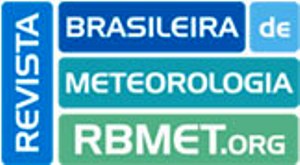Resumo em Português:
Resumo O café é atualmente uma das principais commodities negociadas no mundo. O Brasil é o maior produtor e exportador do grão. Doenças fúngicas são muito comuns nas lavouras de café, e o controle representa uma grande parte dos custos de produção do café. O clima é um fator essencial no desenvolvimento de uma doença, como a mancha de folha de phoma. Essa doença é favorecida pela alta umidade atmosférica e temperaturas amenas. Nesse contexto, este estudo teve como objetivo realizar o zoneamento da favorabilidade climática para uma das principais doenças do café (Phoma ssp.) na região cafeeira do Brasil. O estudo foi conduzido nas principais regiões tradicionais de cultivo de café, ou seja, nos estados do Paraná (PR), São Paulo (SP), Rio de Janeiro (RJ), Espírito Santo (ES), Minas Gerais (MG), Goiás (GO) e Bahia (BA), totalizando 2730 municípios. Dados de temperatura do ar e precipitação diária para o cenário atual foram coletados da plataforma WorldClim versão 2.1 para a última normal climatológica no formato GeoTIFF. Variáveis climáticas futuras foram obtidas pela plataforma WorldClim 2.1 para o modelo climático global IPSL-CM6A-LR para os períodos 2021-2040, 2041-2060, 2061-2080 e 2081-2100, e os cenários SSP-1 2.6, SSP-2 4.5, SSP-3 7.0 e SSP-5 8.5, respectivamente. Assim, o zoneamento foi realizado usando software de sistemas de informação geográfica (QGIS), automatizado com a linguagem Python. Além disso, gráficos foram preparados para melhor representar os resultados. Cerca de 54,77% da região produtora de café apresentou condições relativamente favoráveis para o desenvolvimento da mancha de folha de Phoma, 30,55% favorável, 3,20% altamente e 11,48% não apresentou condições climáticas para a ocorrência da doença. As condições climáticas de outubro a março favoreceram a ocorrência da mancha de folha de phoma. A mancha de folha de Phoma spp. provavelmente reduzirá sua ocorrência em todos os cenários futuros devido à perda de condições climáticas favoráveis. Durante o período 2081-2100, 85,03% de toda a região seria desfavorável ao desenvolvimento de Phoma spp. para o cenário mais pessimista (SSP-5 8.5). As mudanças climáticas proporcionarão condições inadequadas para o desenvolvimento de Phoma spp.
Resumo em Inglês:
Abstract Coffee is currently one of the main commodities traded in the world. Brazil is the largest producer and exporter of the grain. Fungal diseases are very common in coffee crops and control represents a large part of coffee production costs. The climate is an essential factor in the development of a disease such as phoma leaf spot. This disease is favored by high atmospheric humidity and mild temperatures. In this context, this study aimed to carry out the climatic favorability zoning for one of the main coffee diseases (Phoma ssp.) of the coffee-growing region in Brazil. The study was conducted in the main traditional coffee growing regions, i.e., the states of Paraná (PR), São Paulo (SP), Rio de Janeiro (RJ), Espírito Santo (ES), Minas Gerais (MG), Goiás (GO), and Bahia (BA), totaling 2730 municipalities. Air temperature and daily precipitation data for the current scenario were collected from the WorldClim version 2.1 platform for the latest climatological normal in GeoTIFF format. Future climate variables were obtained by the WorldClim 2.1 platform for the IPSL-CM6A-LR global climate model for the periods 2021-2040, 2041-2060, 2061-2080, and 2081-2100 and the scenarios SSP-1 2.6, SSP-2 4.5, SSP-3 7.0, and SSP-5 8.5, respectively. Thus, zoning was carried out using software of geographic information systems (QGIS), automated with the Python language. Also, graphs were prepared to better represent the results. About 54.77% of the coffee-producing region presented relatively favorable conditions for the development of Phoma leaf spot, 30.55% favorable, 3.20% highly, and 11.48% showed no climate conditions for the occurrence of the disease. The climate conditions from October to March favored the occurrence of phoma leaf spot. The Phoma spp. Leaf spot will probably reduce its occurrence in all future scenarios due to the loss of favorable climate conditions. During the period 2081-2100, 85.03% of the entire region would be unfavorable to the development of homas pp. For the most pessimistic scenario (SSP-5 8.5). Climate changes will provide unsuitable conditions for the development of Phoma spp.
